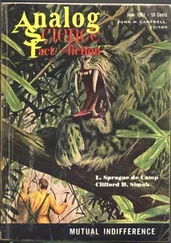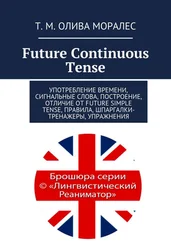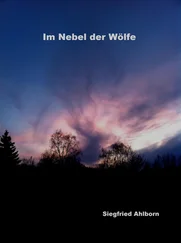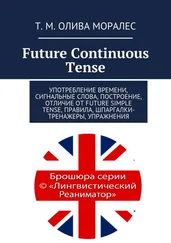The CON sample absorbs the maximum of vapour and has the highest hysteresis of desorption. 20 % of the absorbed water remains in the sample after the test. THM sample absorption is the lowest one but it keeps 18 % of the water after desorption. StC sample keeps 10 % and the three others around 4 %. The differences in the sorption/desorption hysteresis cannot be explained.
TGA analysis of laboratory made plasters was performed shortly after their preparation, in which lime had not time to carbonate. The results obtained are not comparable to samples from historic renders.
Porosity of new plaster samples goes from 58 % in samples of rough render for exterior walls with lime or charcoal grains, to 44 % in fat or pure gypsum renders.
In new render samples, the amount of absorbed water vapour by unit of mass goes from 0.18 to 0.50 i. e. values similar to THM, FStP and StC samples. The highest values correspond to samples with the highest content of lime or charcoal. Lowest values correspond to pure lime samples.
Water vapour permeability was measured for new mortars. Permeance in kg/(m² × s × Pa) goes from 1E-13 to 2E-13. The highest values correspond to samples with 20 % of lime and the lowest ones to pure plaster renders. Tests have been done at three different ages, 10, 25 and 90 days, and the permeability values slightly decrease with time. Compression and flexural strength were measured for several samples of new plaster. Compressive strength varies from less than 1 MPa in some samples of pure gypsum with charcoal to more than 6 MPa in samples of pure gypsum with or without lime. At the tested ages the admixture of lime does not produce any increase in strength, as more time is necessary to complete carbonation of lime.
The amount of mixing water controls mechanical and hydric properties. With increasing amounts of mixing water, compression strength decreases, porosity and water vapour absorption increase and density decreases. The most important variation has been observed in water vapour permeability. In several studied renders, a diminution of 15 % in mixing water induces a decrease of water vapour permeability between 30 and 40 %.
In this paper we present preliminary results in order to understand the properties of gypsum renders as a function of their composition, binder and aggregates, but also of the samples preparation, especially the amount of mixing water, It is difficult to draw general conclusions, as the sampling process is not easy and obtained samples cannot be considered as representative of the whole population of renders in the Vexin Français area.
Another difficulty of the study is the age of the samples. This study has been done during a Master degree research project of 6 months. Samples from buildings are at least 100 years old but laboratory samples have less than 3 months. This difference is especially important for samples with lime. In new 70samples we find some portlandite, not found in old samples, not even in Saint Clair sur Epte sample, fabricated entirely with lime binder.
Nevertheless, some conclusions can be inferred from this work:
a) Historical studied renders are very different from one to the other, even if most of them are composed of more than 80 % of gypsum. Aggregates granulometry and composition, amount of charcoal, number of layers, colour, etc. vary from one sample to the other.
b) The amount of calcite or quartz aggregates is more important in renders of farms or enclosure walls than in façades. Decorative elements are composed almost exclusively of gypsum. The composition also depends on the location of a building in respect to the areas of plaster of Paris production.
c) Mixing water and the amount of lime control the properties of renders. In this way, the plasterer’s skills determine the quality of the products.
d) Porosity cannot be directly related to the water absorption/desorption of plasters. Sorption/ desorption test seems more adequate to characterise hydric behaviour of plasters than porosity measurements.
e) Permeability of plaster is directly related to the capacity of samples to desorb the absorbed water upon drying.
f) It is difficult to compare new and old plasters due to the alteration of their properties with time.
For their help during this work we thank Guillaume SODEZZA (PNR Vexin Français), Marc POTIN and Keltoum BALBZIOUI (Plâtrière Vieujot), Mae PRADAL (UCP student) and Tiffanie LE DANTEC and Jean DUCASSE-LAPEYRUSSE (Cercle des Partenaires du Patrimoine – LRMH).
Blottas, M. (1839). Traité complet du toisé des ouvrages de maçonnerie. Carilian-Goeury et V. Dalmont, Paris.
Debauve, A. (1884). Procédés et matériaux de construction. Quatrième partie. Matériaux de construction. Vve Ch. Dunod, Paris. 680 p.
Flavien, F. (1887). Plâtre, in: Dictionnaire encyclopédique et biographique de l’industrie et des arts industriels. Lami,Tharel & Cie, Paris, pp. 393–404.
Le Dantec, T. (2016). Le plâtre en façade, une architecture francilienne historique. fabricA 10. hal-01611369.
Le Dantec, T. (2019) Les façades enduites au plâtre d’Île-de-France. Le déclin du plâtre extérieur, du XVIIe au XXe siècle. PdD. 555p. Université Paris-Saclay.
NF EN 1936 May 2007. Natural stone test method -Determination of real density and apparent density, and of total and open porosity.
NF EN ISO 12571 October 2013. Hygrothermal performance of building materials and products – Determination of hygroscopic sorption properties.
NF EN 15803 March 2010. Conservation of cultural property – Test methods – Determination of water vapour permeability.
NF EN 13892-2 September 2003. Methods of test for screed materials – Part 2: determination of flexural and compressive strength.
Sanz Arauz, D., Domínguez, L. V. (2009) Evolución de los morteros históricos de yeso al exterior en la España Central. Congreso Nacional de Historia de laConstrucción. Valencia V2:1329–1336, ISBN978-84-9728-316-8.
Shi, L., Liu, Q., Guo, X., Wu, W., Liu, Z. (2013) Pyrolysis behavior and bonding information of coal – A TGA study. Fuel Processing Technology 108, 125–132. doi.org/10.1016/j.fuproc.2012.06.023.
Thénard, L-J ; (1834) Traité de chimie élémentaire théorique et pratique, Paris, Crochard,p. 221.
Toussaint, C.-J. (1841). Nouveau manuel complet du maçon-plâtrier, du carreleur et du paveur, EncyclopédieRoret. Libr encyclop de Roret.
71
STUDY OF DECAY PATTERNS AND DAMAGE ASSESSMENT OF THE ACHAEMENIAN ROCK-RELIEFS OF NAQSH-E RUSTAM
Sahar Ahmadinezhad 1 , Antonio Sansonetti 2 , Andrea Pane 3 , Danilo Biondelli 2
IN: SIEGESMUND, S. & MIDDENDORF, B. (EDS.): MONUMENT FUTURE: DECAY AND CONSERVATION OF STONE.
– PROCEEDINGS OF THE 14TH INTERNATIONAL CONGRESS ON THE DETERIORATION AND CONSERVATION OF STONE –
VOLUME I AND VOLUME II. MITTELDEUTSCHER VERLAG 2020.
1Polytechnic University of Milan, Dep. of Architecture and Urban Studies (DASTU), Milan, Italy
2Institute of Heritage Science (ISPC) Italian National Research Council (CNR), Milan, Italy
3University of Naples Federico II, Architecture Dep.(DiARC), Naples, Italy
Ancient rock reliefs in the necropolis of Naqsh-e Rustam (Iran) are important testimonies of the development of an outstanding monumental art over the centuries, in close relationship with their natural context. The rock reliefs underwent natural and anthropic decay processes in the course of time leading to the loss of fragments and in some cases to severe structural instability. This paper focuses on the oldest group of rock reliefs, dating back to the Achaemenian period; due to their location on the top of a sloping cliff, they are less accessible and more challenging by a conservation point of view. The reliefs have been studied in field and by means of a multi-analytical laboratory procedure, in order to identify the decay patterns, along with an assessment of the state of conservation. In order to frame the problem in a proper historical context, archival material including photographs, drawings and descriptions – created by western scholars between the 17th and the 20th century – were also analyzed focusing on any indications as regards deterioration problems. Fragments were studied by means of optical microscopy, SEM-EDX and XRD analyses. Among the main decay causes and mechanisms, the chemical dissolution of the stone substrate and the heavy microbiological subsurface growth play a major role. The layered aluminosilicate encrustations imply a continuous exposure of the limestone monument to the moisture ingress from the outer environment. Also, indications of the recent impact of atmospheric pollutants were observed, which is noteworthy, considering the distance of the monument from the urban areas.
Читать дальше












